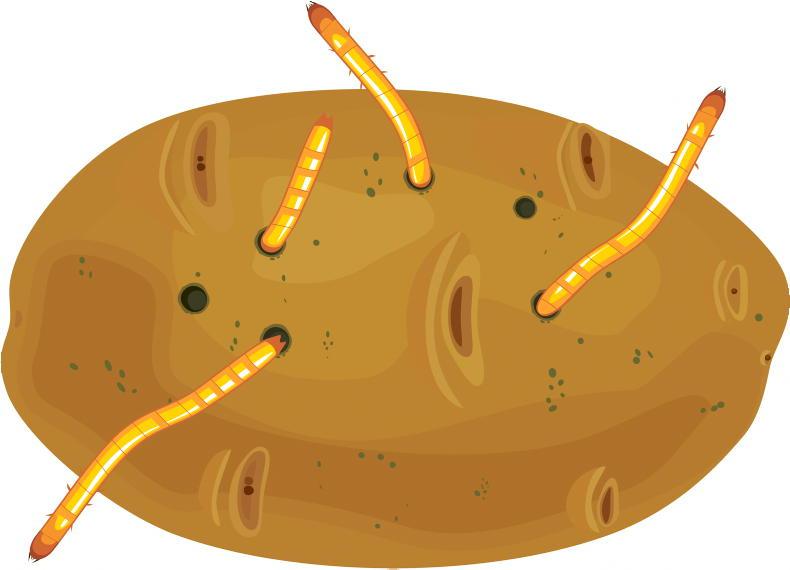Wireworm damage is certainly not a new problem, but it seems that it is an increasing problem across a broader range of crops and damage is occurring in less traditional situations.
In Ireland, we would traditionally associate wireworm damage with the cultivation of old leys, especially poorly managed leys which provide a good habitat for the click-beetle to lay its eggs.
The problem now is that something is changing and new problems seem to be appearing in situations where they would not traditionally be expected. A similar situation has also occurred for years with leatherjackets.
Wireworm damage was most traditionally associated with spring cereals, where the wireworm larvae killed establishing plants to reduce overall plant population.
Damage has also been traditionally associated with potatoes where the larvae burrow into developing tubers and the presence of these holes downgrades the tubers to stock feed.
In recent times, damage is also being reported in carrots and even lettuce and problems also occur in other crops.

This growing problem now poses additional concerns around the potential risks of renewed problems with catch crop production and enforced green covers.
These do not appear to have been a problem up to now, but there is a growing risk associated with any altered husbandry until we understand what exactly is happening in nature.
Integrated research
Following increased damage incidence in root vegetables and cereals caused by wireworms, it is good to hear about a Fera-led R&D project in the UK.
Fera is a centre of excellence for interdisciplinary investigation and problem solving across a range of disciplines in agriculture.
To help address the challenge, industry participants have joined forces to co-fund a project aimed at better understanding the life cycle of the wireworm species present and propose IPM interventions to minimise the problem.
The project, called Enigma 1, involves collaboration between people from Syngenta, Frontier, G’s Fresh, Elveden Estate, Pearce Seeds, Inov3PT and Blackthorn Arable.
The three-year research programme aims to further understand the specific wireworm species that are affecting crops
These businesses are representative of a wide range of crops and various stages of the supply chain.
The objective is to better understand wireworm species and their changing patterns of damage in greater detail.
The three-year research programme aims to further understand the specific wireworm species that are affecting crops today and their lifecycles. The ultimate objective is to find successful Integrated Pest Management (IPM) techniques that can be used to better control wireworms in a range of crop situations.
As well as lost yield and quality, wireworm problems in lettuce affects the uniformity of maturity and this adds inefficiencies for harvesting crews and hence labour costs.
Improved understanding
It is hoped that the project will increase our understanding as to how different wireworm species respond to both cover crops and min-till agriculture. Such information will be extremely beneficial across the sector.
This research is all the more important because there are now no chemical actives allowed for the control of wireworms. This necessitates alternative preventative solutions, which help to keep land free of the problem.
This may seem like airy fairy stuff to someone who has a problem in a field today, but it is very much part of where the new sustainable use of pesticides directive is driving us.
Having very detailed knowledge of the specifics of the life cycle of different wireworm species or other pests is critical if farmers are to be able to implement non-chemical strategies to help reduce overall pesticide usage.
But even before this, it is necessary to establish which species are causing damage in different crops and at what times.
The presence of wireworm in itself is not a direct indicator of the potential for damage. This is why understanding life cycles is critical information.






 This is a subscriber-only article
This is a subscriber-only article











SHARING OPTIONS: